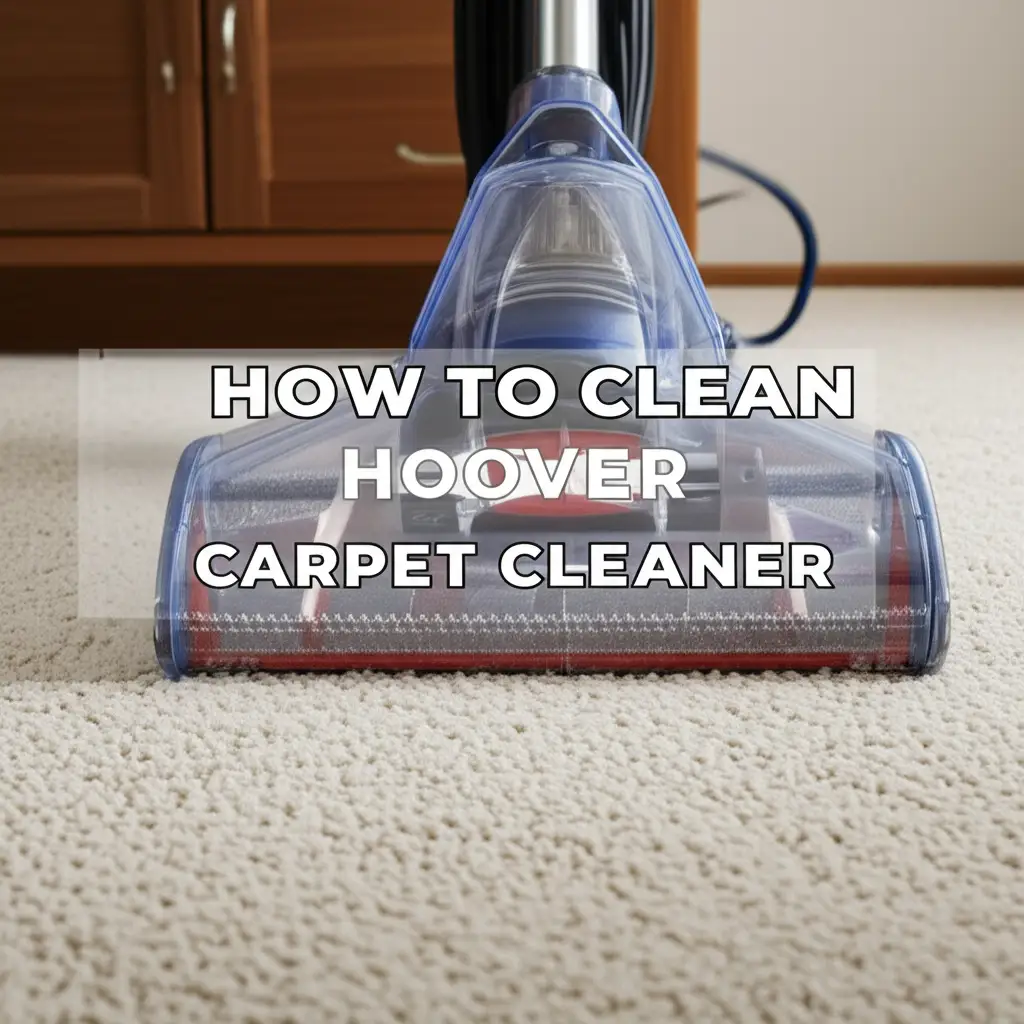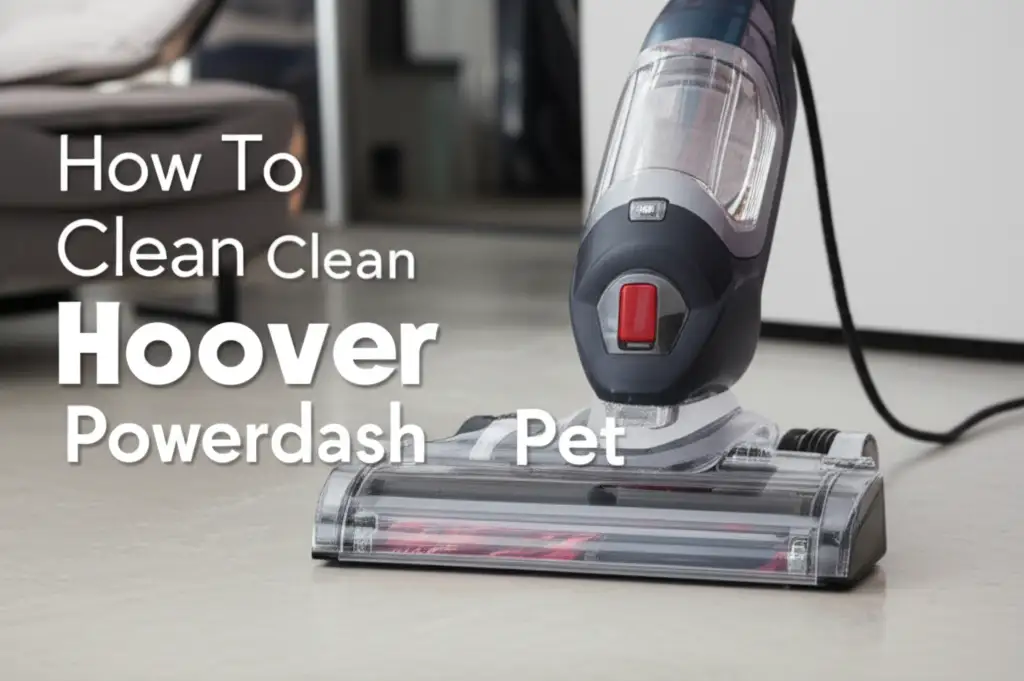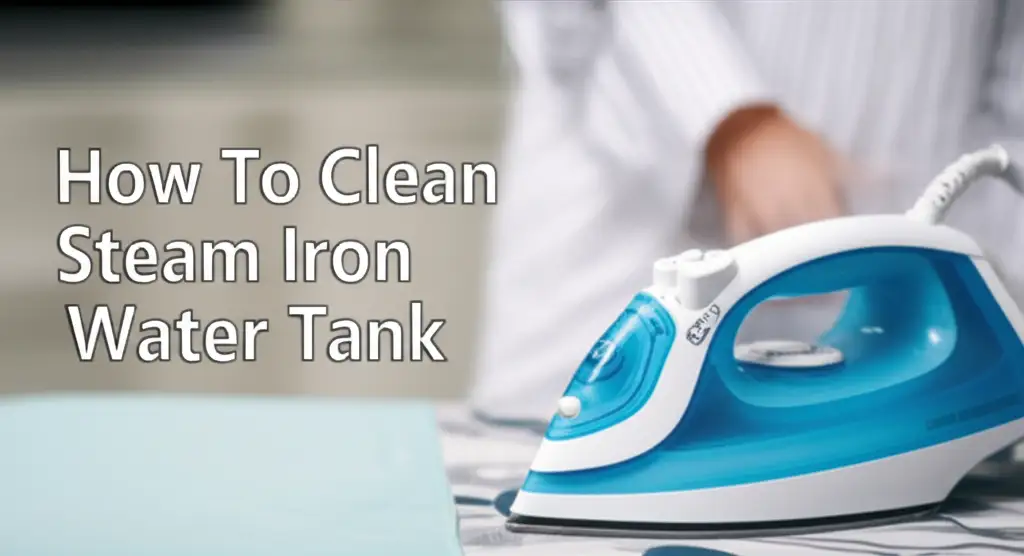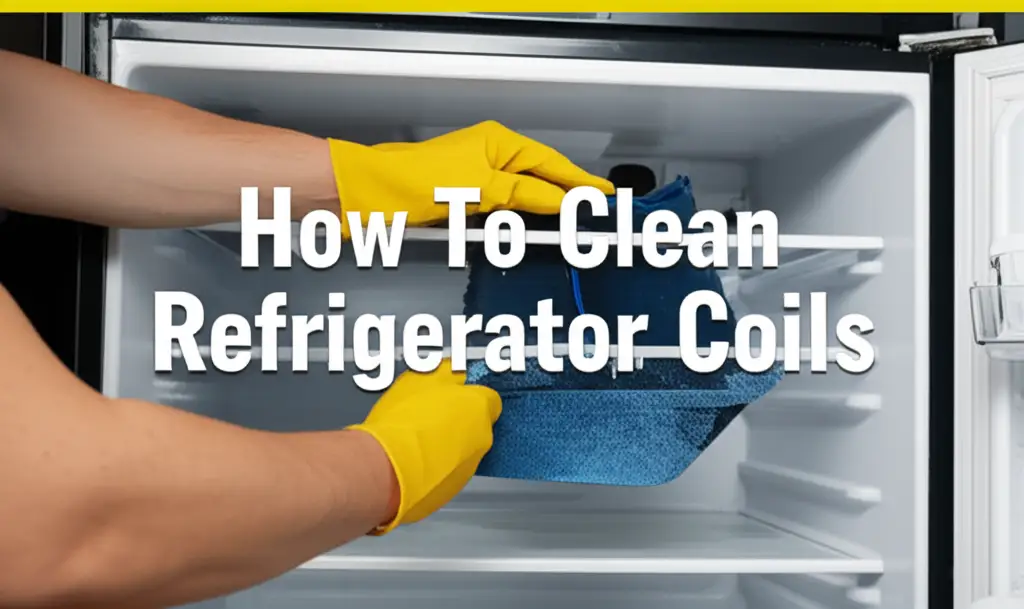· Appliance Care · 14 min read
How To Clean Hoover Carpet Cleaner

Deep Clean Your Hoover Carpet Cleaner: A Complete Guide
Maintaining a clean home is a priority for many of us. Our trusty Hoover carpet cleaner helps keep carpets looking fresh and feeling soft. But what about the machine itself? Did you know your carpet cleaner needs cleaning too? A dirty machine can spread grime, leave odors, and even shorten its lifespan. Knowing how to clean your Hoover carpet cleaner properly is essential for optimal performance.
This guide helps you understand why routine cleaning matters. I will walk you through each step of cleaning your Hoover carpet cleaner. You will learn how to handle tanks, brushes, hoses, and more. Following these steps helps your machine work better. It also ensures your carpets get truly clean every time. Let’s make sure your cleaning efforts are always effective.
Takeaway
- Regularly clean your Hoover carpet cleaner to prevent odors and maintain peak performance.
- Empty and rinse dirty water tanks after every use.
- Disassemble and clean brushes, nozzles, and filters frequently.
- Inspect and flush hoses and attachments to remove residue.
- Allow all components to air dry completely before reassembly to prevent mold.
To clean a Hoover carpet cleaner, disassemble its removable parts like tanks, nozzles, and brushes. Rinse dirty water tanks thoroughly. Wash brushes and nozzles to remove hair and debris. Flush hoses. Use a vinegar solution for deep cleaning and descaling. Allow all parts to dry completely before storing the machine. This process ensures effective, odor-free cleaning.
Why Cleaning Your Hoover Carpet Cleaner Matters
Your Hoover carpet cleaner works hard to pull dirt and stains from your carpets. Over time, all that dirt, soapy residue, and dampness build up inside the machine. This buildup can cause several problems. It might leave a bad smell in your home. It can also reduce the cleaner’s effectiveness.
Imagine trying to clean with a dirty sponge. It does not work well. The same is true for your carpet cleaner. Gunk inside the machine can clog parts. This makes the motor work harder. It also means your carpets are not getting as clean as they should. Regular cleaning prevents these issues. It keeps your machine in top shape. You save money by extending its life.
Dirty water tanks hold bacteria and mildew. These germs can grow quickly in damp, dark conditions. When you use the machine again, these germs can spread back onto your carpets. This defeats the purpose of cleaning. Keeping your Hoover clean ensures hygienic results. It protects your family’s health and your home’s air quality. This simple habit makes a big difference.
Essential Pre-Cleaning Steps and Safety
Before you begin cleaning your Hoover carpet cleaner, take a few important safety steps. These steps protect both you and your machine. Ignoring them can lead to electrical hazards or damage. Always prioritize safety first. It makes the cleaning process smooth and worry-free.
First, unplug your carpet cleaner from the wall outlet. This cuts off power to the machine. You eliminate any risk of accidental startup. It also prevents electric shock while you handle wet components. Never clean an appliance that is still plugged in. This is a crucial safety rule for all electrical devices.
Next, make sure both the clean water tank and the dirty water tank are empty. Remove them from the machine. Pour out any remaining water or cleaning solution. This prevents spills during disassembly. It also ensures you start with empty containers ready for cleaning. This step also reduces the weight of the machine, making it easier to move.
Lastly, find a suitable workspace. A laundry room sink, a utility tub, or even an outdoor area works well. You will be dealing with water and potentially dirty residue. Having a designated space helps contain the mess. Lay down old towels or a tarp if you are working indoors. This protects your floors from spills. Preparing your space makes the entire process more efficient.
Cleaning the Dirty Water Tank and Lid
The dirty water tank collects all the grime and liquid pulled from your carpets. This is often the grimiest part of your Hoover carpet cleaner. It is also a prime spot for mold and odors to develop. Cleaning this tank thoroughly is vital after every use. This simple step prevents many future problems.
Start by emptying the dirty water tank completely. Pour the contents down a drain. Rinse the inside of the tank with warm water. Swish the water around to loosen any stuck-on debris or suds. You might see a layer of sludge inside. This is normal. It just means the tank is doing its job.
Next, fill the tank about halfway with warm water. Add a few drops of dish soap or a cup of white vinegar. Vinegar is excellent for breaking down mineral deposits and eliminating odors. It also helps prevent mold growth. Shake the tank vigorously. Let it sit for 5-10 minutes if there is heavy residue. For tips on using vinegar effectively, you can read more about how to clean with vinegar.
Use a long-handled brush or a bottle brush to scrub the inside surfaces. Pay close attention to corners and crevices where gunk can hide. If your tank has a removable lid or float, clean those parts separately. Rinse everything thoroughly with clean, warm water until all soap or vinegar residue is gone. Make sure no soapy film remains. Air dry the tank completely upside down. This allows all moisture to evaporate. Air drying prevents mold or mildew from forming.
Cleaning the Clean Water Tank and Solution Reservoir
While the clean water tank does not collect dirty water, it still needs attention. Residue from cleaning solutions can build up over time. This can clog spray nozzles or even affect the effectiveness of future cleaning cycles. A clean tank ensures your fresh solution dispenses correctly. It keeps your Hoover carpet cleaner working as intended.
First, empty any remaining cleaning solution from the clean water tank. Rinse the tank with warm water. Swish it around to dislodge any lingering solution. Sometimes, a film can form on the inside from concentrated detergents. It is important to remove this film. This prevents future clogs.
Next, fill the tank with warm water. Add a small amount of mild dish soap. You can also use a mixture of equal parts water and white vinegar. Vinegar helps break down detergent residue and prevents mineral buildup. Gently shake the tank. Let the solution sit for a few minutes. This allows the cleaner to work on any sticky residue.
Use a soft cloth or a narrow brush to clean the inside if you can reach it. Pay attention to the cap or any openings where solution dispenses. Rinse the tank thoroughly with clean, warm water. Make sure no soap suds or vinegar smell remain. It is important to rinse completely. This prevents any cleaner residue from mixing with your fresh solution later. After rinsing, let the tank air dry completely. Place it upside down. Ensure it is completely dry before reattaching it to the machine. This prevents mold and ensures your machine is ready for the next use.
Cleaning the Nozzle, Brushes, and Filter
These components are crucial for your Hoover carpet cleaner’s performance. The nozzle sprays the cleaning solution. The brushes agitate the carpet fibers. The filter protects the motor from debris. If these parts are clogged or dirty, your machine cannot clean effectively. Hair, dirt, and fibers often get tangled here. Regular cleaning of these parts is essential. This ensures strong suction and proper spray.
Cleaning the Nozzle: The nozzle is where the dirty water and air get sucked back into the machine. It can get clogged with hair and debris. Many Hoover models have a removable nozzle. Detach it carefully according to your model’s instructions. Rinse it under warm, running water. Use a small brush, like an old toothbrush, to scrub away any trapped hair or gunk. Ensure all spray jets are clear. Hold it up to the light to check for blockages. This step is vital for proper suction.
Cleaning the Brushes: Hoover carpet cleaners use rotating brushes to scrub the carpet. These brushes collect a lot of hair, lint, and tangled fibers. Most Hoover models allow you to remove the brush roll easily. Detach it from the base of the machine. Use scissors or a utility knife to cut away any tangled hair or thread. Be careful not to cut the brush bristles. Rinse the brush roll under warm water to remove any remaining dirt or cleaning solution residue. You can use a mild soap if needed. Ensure the bristles are clean and free of debris. For specific Hoover models like the PowerDash Pet, these steps are very similar and important for maintaining suction, as discussed in how to clean a Hoover PowerDash Pet.
Cleaning the Filter: Many Hoover models have a filter that protects the motor. This filter prevents large debris from entering the motor assembly. Locate your machine’s filter, usually near the dirty water tank or the motor housing. Remove it gently. Tap it against a trash can to dislodge loose dirt. If it is washable, rinse it under warm water until the water runs clear. Do not use soap unless specified by the manufacturer. Allow the filter to air dry completely. Never put a wet filter back into the machine. A wet filter can damage the motor. Once dry, reattach it securely.
Cleaning Hoses and Attachments
Many Hoover carpet cleaners come with a hose and various attachments for spot cleaning or stairs. These tools also collect dirt, residue, and sometimes even mold. Cleaning them ensures they are ready for the next use. It also prevents foul odors from developing in your machine. Ignoring these parts can lead to frustrating clogs or unpleasant smells.
First, detach all hoses and cleaning attachments from your Hoover carpet cleaner. Most hoses simply unclip or twist off. Look for any visible clogs or debris inside the hose. Hair, lint, or dried solution can get stuck. Use a long, flexible brush, like a bottle brush, to push through the hose. This helps dislodge any buildup.
Next, flush the hose. Run warm water through one end until it comes out clear from the other end. You can add a small amount of white vinegar to the water. Vinegar helps break down mineral deposits and eliminate odors. Let the vinegar solution sit inside the hose for a few minutes. Then, flush it again with clear water. For issues like mold in damp areas, understanding how to clean mold under a sink can provide insights into effective cleaning agents that also apply here.
Clean the attachments separately. Wash them under warm running water. Use a small brush or old toothbrush to scrub away any dirt or residue. Pay attention to any crevices or spray nozzles on the attachments. Some attachments may have removable parts. Take them apart if possible for a more thorough cleaning. Rinse all attachments well.
After cleaning, it is crucial to let all hoses and attachments air dry completely. Hang hoses so water can drain out. Place attachments in a well-ventilated area. Drying might take several hours. Do not reattach them to the machine until they are bone dry. This prevents mold and mildew growth. Mold can cause unpleasant smells and damage the machine. Proper drying ensures your tools are fresh and ready.
Descaling and Deep Sanitization
Over time, mineral deposits from hard water can build up inside your Hoover carpet cleaner. This scale can clog water lines, reduce spray pressure, and impact performance. Furthermore, damp internal components are perfect breeding grounds for bacteria and mold. Deep sanitization ensures your machine is truly clean and odor-free. This goes beyond just rinsing and wiping.
Descaling Your Hoover Carpet Cleaner: For descaling, white vinegar is your best friend. It is a natural acid that dissolves mineral deposits. Fill the clean water tank with a solution of equal parts white vinegar and warm water. Run the machine for a few minutes, just as if you were cleaning carpets. Let it spray and suck up the solution. You can do this in a utility tub or over a drain. This helps flush the internal lines and nozzles. You can also let the solution sit in the machine for about 15-30 minutes. This allows the vinegar to work on stubborn scale. After soaking, run several tanks of clear, clean water through the machine. This rinses out all the vinegar and loosened deposits. This process is similar to how one might deep clean other appliances or areas where mineral buildup occurs, such as preventing mold in a shower.
Deep Sanitization and Mold Prevention: Mold and mildew thrive in damp environments. Your carpet cleaner is a prime spot if not dried properly. After cleaning all components, ensure they dry thoroughly. This is the most critical step for mold prevention. For an extra layer of sanitization, you can use a diluted bleach solution (1 part bleach to 10 parts water) for non-metallic, removable plastic parts. Soak them for 10-15 minutes. However, always check your Hoover manual first. Bleach can damage some materials. Vinegar is a safer, general alternative for killing mold and bacteria. Cleaning mold with vinegar is a very effective and natural method.
After using any sanitizing solution, rinse all parts extremely well with clean water. You do not want any chemical residue left behind. Allow all parts to air dry completely. This might take 24-48 hours. Store your Hoover carpet cleaner in a dry, well-ventilated area. Do not store it in a damp basement or closet. Proper storage prevents future mold growth. These steps extend the life of your machine. They also ensure your home smells fresh after every carpet cleaning.
Frequently Asked Questions About Cleaning Hoover Carpet Cleaners
How often should I clean my Hoover carpet cleaner?
You should empty and rinse the dirty water tank after every single use. A more thorough deep clean, including brushes, nozzles, and internal flushing, is recommended every 3-5 uses. If you clean very dirty carpets or notice odors, clean it more frequently. Regular maintenance prevents major issues.
What causes a bad smell coming from my carpet cleaner?
A bad smell often comes from dirty water residue, mold, or mildew growing inside the tanks, hoses, or brush area. This happens when the machine is not cleaned and dried properly after use. Leftover moisture creates a perfect environment for bacterial growth. Always rinse thoroughly and air dry all components.
Can I use bleach to clean my Hoover carpet cleaner?
Using bleach is generally not recommended for all parts of your Hoover carpet cleaner. Bleach can damage certain plastics, rubber seals, and internal components over time. It can also leave a residue that might bleach your carpets. White vinegar is a safer and effective alternative for sanitizing and descaling. Always check your specific model’s manual for guidance.
How do I prevent mold from growing inside my carpet cleaner?
The best way to prevent mold is to ensure all parts, especially tanks and hoses, are completely dry before reassembling and storing the machine. After cleaning, let everything air dry for 24-48 hours in a well-ventilated area. Store the machine in a dry spot. Running clear water through the machine after each use also helps prevent residue buildup.
My Hoover carpet cleaner is leaving streaks or dirty water. Why?
Streaks or dirty water often indicate clogged nozzles or a dirty brush roll. Hair and debris can block spray jets. The brushes might be too caked with dirt to properly agitate or collect water. A dirty dirty-water tank or clogged filter can also reduce suction. Deep clean the nozzle, brushes, and filter. Also, ensure your dirty water tank is completely empty and clean before each use.
Conclusion
Taking the time to clean your Hoover carpet cleaner is not just an extra chore; it is an essential part of home maintenance. You now understand how crucial it is to regularly clean all parts of your machine. From emptying the dirty water tank after every use to descaling internal components, each step helps maintain your cleaner’s peak performance. These simple actions prevent odors, extend the life of your appliance, and ensure your carpets truly get clean.
A well-maintained Hoover carpet cleaner means fresher carpets and a healthier home environment. By following the detailed steps I have provided, you are protecting your investment and ensuring efficient cleaning results every time. Make cleaning your Hoover carpet cleaner a regular part of your cleaning routine. Your carpets, and your nose, will thank you for it. Keep your cleaning tools clean, and they will always serve you best.
- Hoover carpet cleaner
- carpet cleaner maintenance
- appliance cleaning
- prevent odors
- deep cleaning




